Zucchini is just one of the many varieties of squash, and as a summer squash, it grows in a highly prolific manner. A single zucchini plant can yield up to nine pounds of fruit, and doesn’t take up much space in your garden.
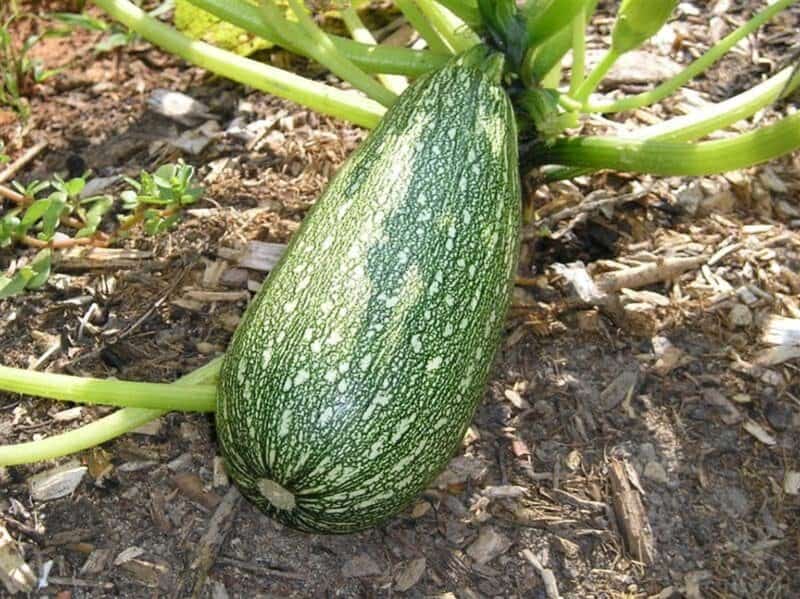
Furthermore, zucchini is incredibly versatile in the kitchen, making a great addition to or substitution for pasta, casseroles, breads, and more.
If you’re thinking about growing zucchini in your vegetable garden next year, consider this easy step-by-step guide to make light work of the process.
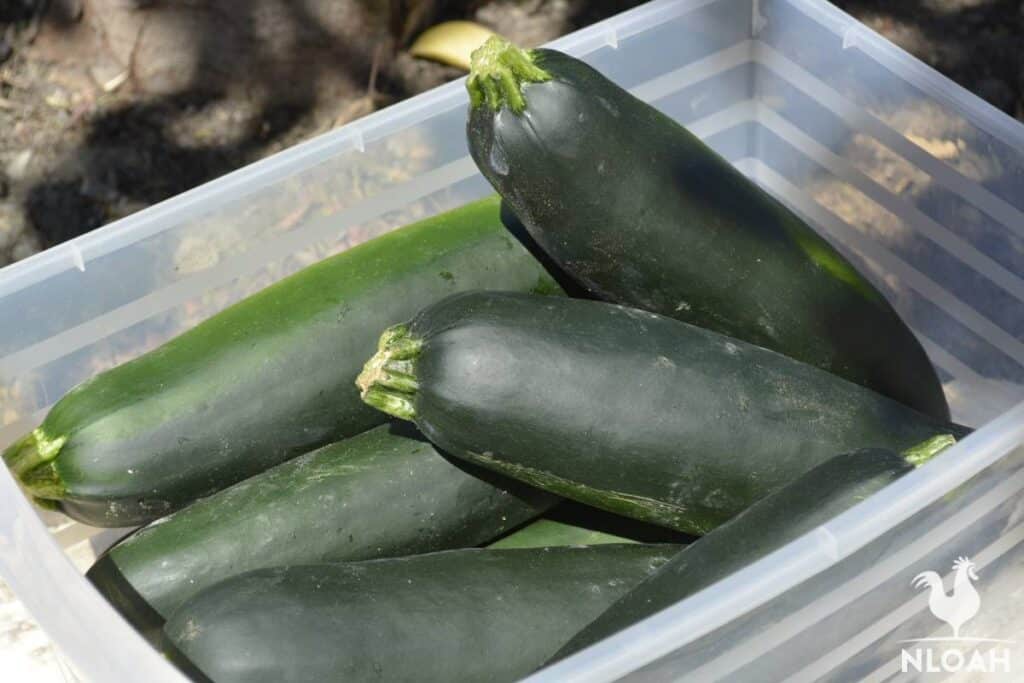
Plan out your planting area
Before you can start planting, you need to make sure you select the best possible spot for planting your zucchini seeds. Zucchini prefers to grow in well-drained, fertile soil. That being said, this vegetable adapts easily to almost any growing condition, and can tolerate poorer soils as well. It grows best in soils with a pH around 6.5.
Wait to plant until the soil has reached at least 60F (16C). This is usually a week or so after the last frost. Whatever you do, don’t rush things. Zucchini is extremely susceptible to the cold, and if any fruits form during cold weather, they will be severely damaged. You can use row covers if you accidentally planted to early and the temperature dips.
If you want to warm the soil sooner, you can lay down a sheet of thick black plastic. This will warm the soil even before the last frost, and also help to provide your plants with additional heat throughout the growing season.
You don’t need to lift the plastic when you plant – you can instead cut holes and insert seeds into the holes (they don’t need to be any larger than seven or eight inches in diameter). Zucchini and other squashes prefer a little extra heat, and this will also help reduce weeds.
When you are planning out where you would like to plant, do so carefully. Large groups of the same crop can be an easy target for pests. You don’t need to use pesticides in order to control pests – you just need to be mindful of where you plant. Crop rotation between and during seasons helps eliminate the need for enhanced pest control, reduces the spread of disease, and also helps to maintain a healthy balance of nutrients in your soil.
While you can plant zucchini in the same spot for three or four years, you should try to switch things up regularly. It never hurts to change plants’ locations year after year. Crops are traditionally divided into four main groups: fruit-bearing (like tomatoes), root vegetables (like carrots and potatoes), leafy greens (spinach or kale) and legumes (beans). Try to avoid planting similarly-grouped vegetables in the same area. They can be susceptible to the same pests and diseases, and also deplete similar nutrients from the soil.
That said, you should try not to plant zucchini near plants like cucumbers, squashes, melons, or other cucurbits. It is safer to intersperse zucchini with plants like corn and beans. This also provides other benefits, as they can serve as companions to each other.
The classic “Three Sisters” companion planting system necessitates planting zucchini with corn and beans so that the beans can fix nitrogen in the soil. The corn acts as a trellis for the beans, and the zucchini plants’ harsh bristles help deter pests from damaging the other plants.
Once you’ve chosen where you want to plant your zucchini, you need to figure out what varieties you would like to plant. Some are more productive than others, while others produce more pest-resistant plants. Some of the most popular varieties are Burpee Golden Glory, Tigress, and Green Machine. Keep a record of your plants between years so that you have an accurate log of successes, failures, and harvest yields.
Amend and prepare your soil
Don’t feel pressured to over-fertilize your soil. Too much fertilizer will cause your zucchini plants to develop lush foliage, but fewer fruits. Instead, provide ample amounts of fertilizer throughout the year so that it is gradually released and absorbed by the soil.
You can purchase synthetic fertilizer from your local lawn and garden store, but most home gardeners instead swear by compost. This can be added throughout or before the winter, as well as long into spring. As long as the compost is appropriately aged, you can even add it once the zucchini seeds have developed into seedlings. Chicken manure is another great fertilizer, but don’t add raw manure right before, during, or after planting. This can burn your plants and cause contamination. Instead, add any animal manure the autumn before you plan to plant.
Loosen the soil by lightly raking it – no tilling it is necessary. Tilling can actually harm beneficial microorganisms. Instead, loosen it with a trowel or hoe just enough to get the soil moving and to kill any weed seeds. Then, you are just about ready to plant.
Construct a trellis (optional)
A trellis is not a mandatory item for zucchini, as it is for other plants like pole beans. However, zucchini plants can become quite large and sprawling. If you have limited garden space, a trellis can help free up some of that acreage by requiring the zucchini to crawl skyward, instead of horizontally.
You can build an inexpensive trellis out of some sturdy stakes, rebar, or similar materials, or purchase one that is already built and ready to go.
Plant seeds or transplants
Plant zucchini seeds in hills. This refers to clustering your seeds so that they grow close together. The rule of thumb is to plant two or three seeds in one hill. If you accidentally drop more seeds in a hill, never fear – you will just need to cut the seedlings when they emerge.
When you plant, drop two or three seeds per hill, with each hill three to four feet apart in rows eight to twelve feet apart. Hills should be six to twelve inches tall and twelve to twenty-four inches wide.
If you are using a trellis, you may be able to get by with slightly less space. A good rule of thumb is to keep the plants close enough together that you can easily make your way through the rows, but they aren’t more than a few steps away from each other, either.
Zucchini plants need to be seeded in hills because they must be pollinated several times to form a fruit. Each flower only opens for one day. Having multiple flowers close together increase the likelihood that your flowers will be pollinated.
Zucchini plants tend to perform better when started as seeds, but if you want to get a jumpstart on the growing season, you can also start them indoors. Begin seeds inside about six weeks before the last estimated frost date. Don’t transplant them until long after the first frost has passed, and be sure to transplant before making the complete transition.
If your seedlings emerge and are producing foliage and flowers, yet no fruit, you could have a pollination problem. Both male and female flowers need to open at the same time, but only female flowers will actually set fruit. Be patient, as sometimes the plants set male flowers first. If you’re running out of time, you may need to hand-pollinate by dipping into the male flowers and rubbing the pollen onto the female flowers.
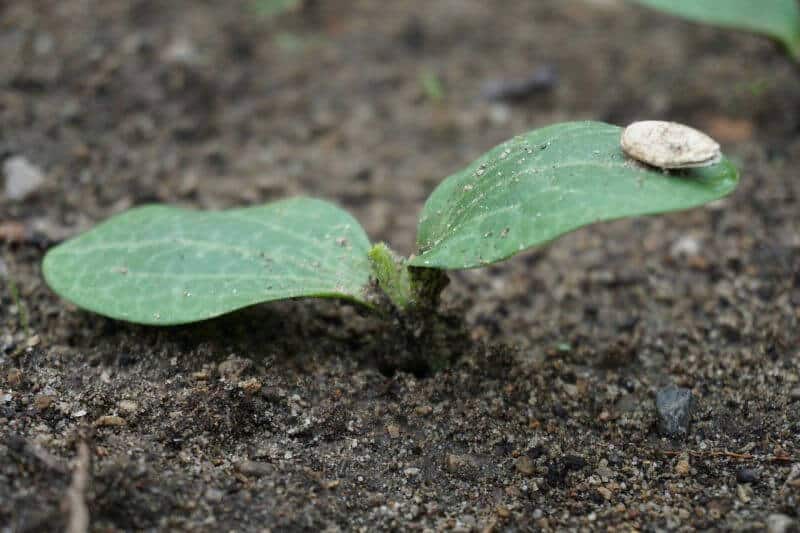
Water regularly
Most zucchini growing problems are caused by a lack of – or too much! – water. If your plants dry out, they might fail to set fruit or fruit will ripen more slowly. Provide consistent soil moisture by adding a thick, three-inch layer of mulch. Water regularly (at least an inch of water every week) and consider installing a rain gauge to keep track of natural precipitation.
When you water, try to water from below, instead of from above. Too much water on the leaves can lead to wilt and fungal disease. If your means allow, install a drip irrigation system to water your garden, and set it on a timer so that you don’t have to think twice about watering your crops. Generally, provide a good thorough soaking every few days instead of a light drizzle every day. This will allow for better absorption into the plants’ roots.
Fertilize every three weeks and weed as often as possible
Zucchini don’t need a lot of extra nutrients once they have started to grow and set fruits. However, you can add compost or compost tea around the stem of the plant if you think they might need an extra boost.
If you planted in black plastic, or if your plants have started to set fruit and sprawl, you probably won’t need to do much weeding, either. It can be difficult to weed around zucchini plants, as they produce spiky leaves and growths, so it’s smart to mulch or otherwise encase the plants so that there is no actual need to weed.
Prevent pests, diseases, and other problems
While zucchini are immune to many common garden problems, they are haunted by a few particular pests, diseases, and other issues. One of the most common zucchini pests is the squash borer. These bugs emerge in late June or early July, having hidden in the soil all winter. Their eggs will be laid at the base of the squash plants, and when they hatch, larvae will burrow into the stem and eliminate the flow of water to your plants.
The only tried-and-tested way to prevent the squash borer is to wait until mid-July to plant. Unfortunately, this is not often possible, as many cold-climate gardeners need to plant earlier in order to have a harvest before the first fall frost.
As an alternative solution, you can wrap the stem of each zucchini plant with a piece of aluminum foil. Wrap about two inches of the stem where it first comes out of the ground. This way, the larvae will not be able to bore through the stem as they emerge from the ground.
Another common zucchini pest is the squash bug. These are tough to control, and can cause premature yellowing or browning of the leaves. The only way to control them is to manually remove them. Check them as often as possible by lifting the leaves and examining underneath. You can pick the eggs and bugs off plants once you find them. Most squash bugs are resistant to pesticides, but some can be controlled with insecticidal soap.
Powdery mildew is one of the most common diseases to affect zucchini plants. This pervasive fungus attacks in the heat of the summer. It makes your plants appear to be covered in powder, and while it doesn’t harm plants as badly as other diseases might, it can reduce photosynthesis and slow the growth of your plants.
To prevent powdery mildew, avoid planting zucchini too closely together. This will help provide adequate air flow and prevent water from gathering between the plants. There are also powdery mildew-resistant varieties that you can select. You can also use organic fungicides, or natural DIY remedies such as a mixture of water, soap, and baking soda.
Another common issues is bacterial wilt. This is less common on zucchini than it is on cucumbers, but can still cause issues as your fruits will rot and be entirely useless. It causes destructions when it does strike, and is spread by the cucumber beetle. Don’t plant your zucchini next to cucumbers or other squash, and trap and kill cucumber beetles when you find them.
Blossom end rot affects zucchini plants just as it does tomatoes and other fruit-producing vegetables. This is caused by calcium deficiency and inadequate water. Make sure your plants receive steady amounts of water, and while you can’t add calcium once your plants are already growing, you can add calcium (think about egg shells or similar sources) between growing seasons.
Harvest the fruits
If you’re disappointed with the size of your harvest, or simply have extra time on your hands, you might want to consider planting another batch of seeds. You can start new plants several times per season and still enjoy a harvest, as zucchini will last until the first frost. Zucchini plants pump out lots of fruits, so eventually the plant does tire and wilt. You can direct-seed in July or August and have a harvest well into the autumn months.
If you begin to harvest your plants and notice that they are pale or not yielding as much as you would like, you might not have planted in a sunny enough area. There’s not much you can do if your plants are already growing, but next year try to plant in a sunnier location. This will attract more pollinators and also encourage greater photosynthesis.
Wait until your zucchini are about four to six inches long before harvesting. Harvest while they’re still this young, as they will be slightly tenderer. Twist the plant away from the vine, taking care not to damage the vine or stem. It is sometimes helpful to use a knife or shears to avoid excess damage.
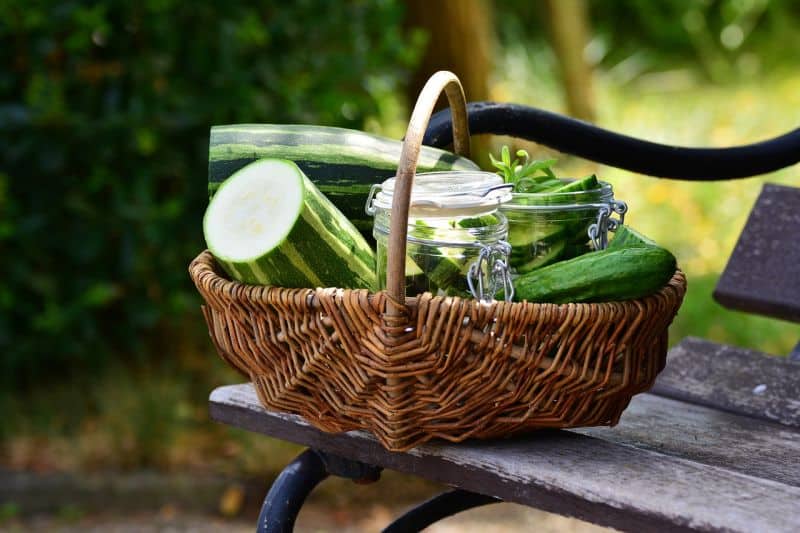
Preserve your harvest
Zucchini can be preserved in a number of ways. While it’s best consumed fresh, zucchini can be frozen for a winter of enjoyment. To freeze, you should shred, spiralize, or slice your fruits first. Zucchini, due to its high water content, tends to soften quite a bit when thawed. As a result, cutting or processing it in some other way ensure you will be able to work with it when you’re ready to eat.
Zucchini can also be dehydrated, either in your oven or a commercially made dehydrator, but avoid canning it. Due to its high water content, the pieces distribute in a lopsided manner when placed in a glass jar. As a result, it does not heat evenly, so you may have issues related to bacterial development and early spoilage. There’s no need to worry about canning, either – zucchini can last several weeks in your refrigerator, at least a week on the counter at room temperature, and for several months when frozen.
Enjoy your delicious vegetables
Zucchini can be eaten fresh or prepared in a variety of ways. Did you know that zucchini blossoms can even be eaten, and are delicious when breaded and fried?
You can spiralize your zucchini to make it into zoodles, or shred it as a nutritious addition to bread. Dice it up and eat in a casserole or pasta, or even eat it fresh in a salad. The opportunities are endless, and to be fair, you will need an endless amount of creative recipes in order to keep up with the limitless bounty your garden will surely produce.
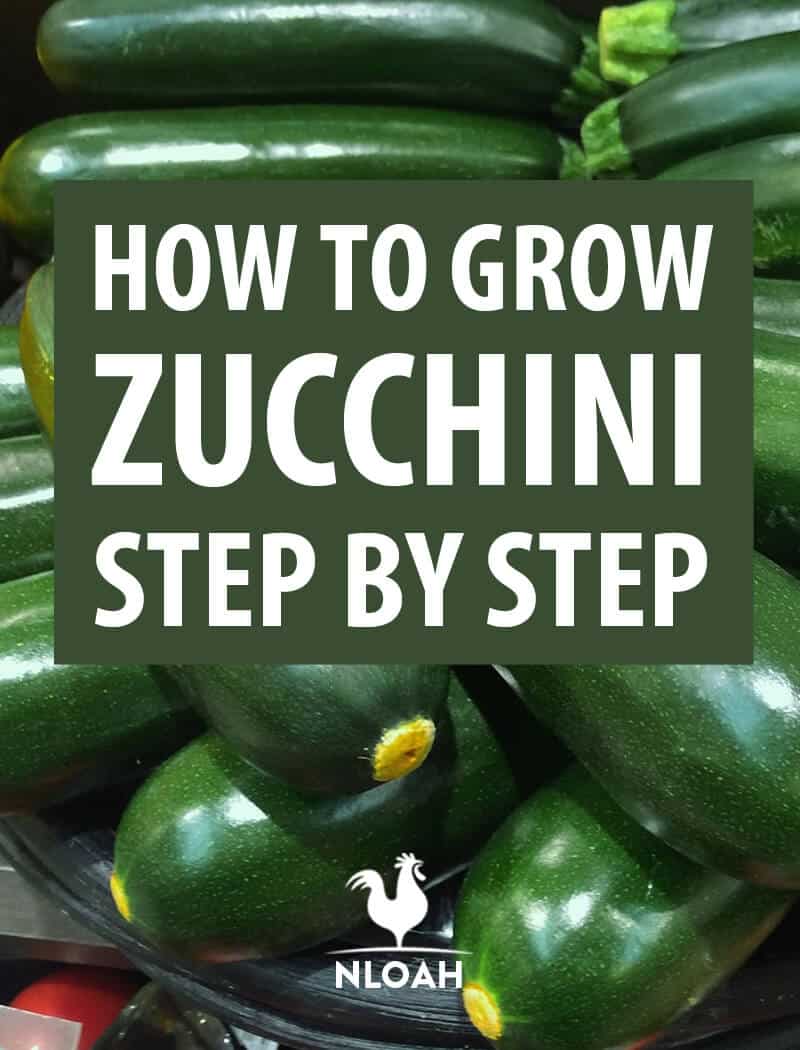

Rebekah is a high-school English teacher n New York, where she lives on a 22 acre homestead. She raises and grows chickens, bees, and veggies such as zucchini (among other things).

so glad I came across this as I was going to try and plant Zucchini this year. My first attempt.